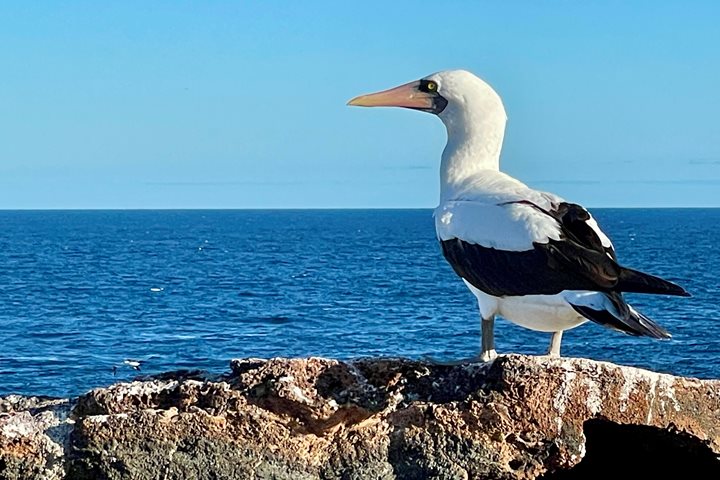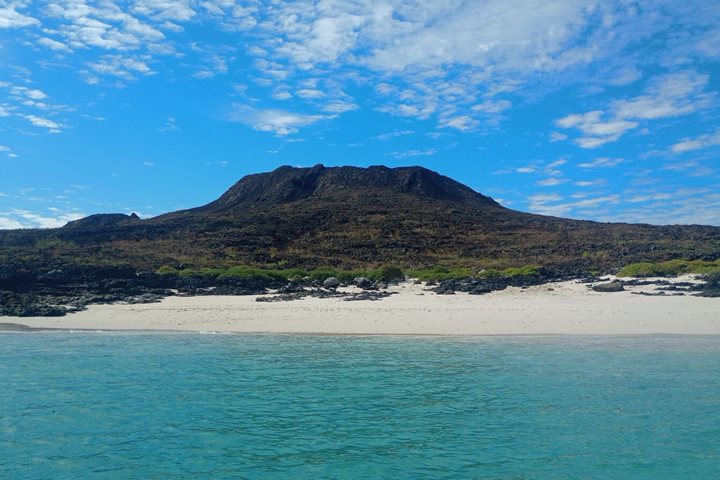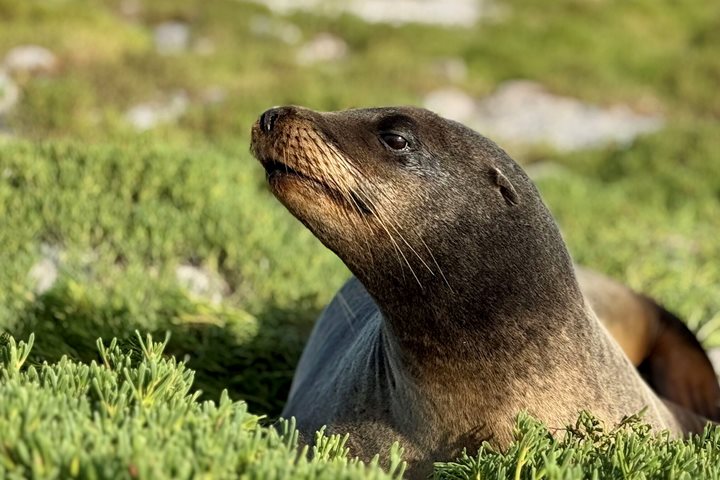An amazing day started with an early walk on South Plaza Island. Galapagos sea lion pups welcomed us by the disembarkation area and along the trail we found the endemic swallow-tailed gulls together with their chicks while Galapagos land iguanas were looking for food underneath the prickly pear cacti. After our trek, we enjoyed awesome weather conditions for our first kayaking outing!
In the afternoon, we went deep-water snorkeling off Santa Fe Island where we enjoyed encounters with colorful schools of fish, Galapagos sea lions, Pacific green sea turtles, and eagle rays. During our hike, we observed the endemic Santa Fe land iguana, and as we were departing, we got to see a good number of whitetip reef sharks! Galapagos is a magical place!







